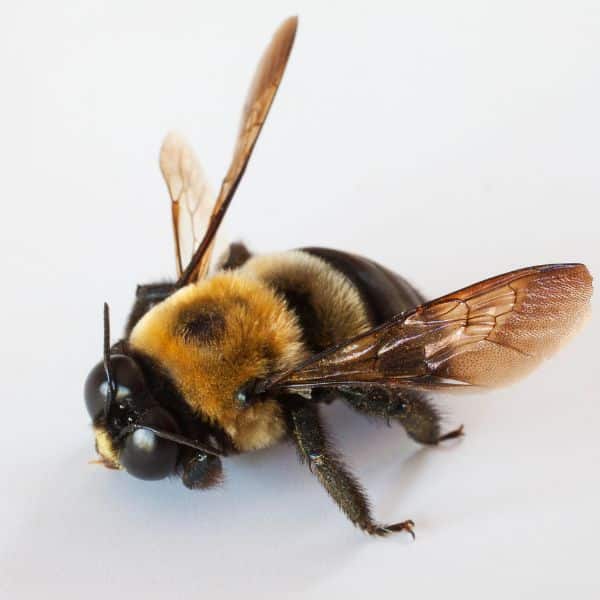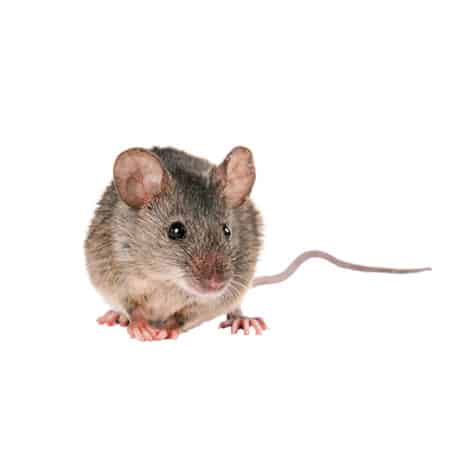Millipede Control in MA | House Millipede Exterminator
Waltham Pest Control provides house millipede control services to home owners throughout Greater Boston Massachusetts. If you are experiencing frequent millipedes in your home or basement call Waltham Pest Control today and we will provide you with a free estimate to control millipedes in your home.
About Millipedes
The millipede is a dark brown, worm-like creature with up to 400 very short legs. It possesses two pairs of legs per body segment. Despite all these legs, a millipede moves slowly. It grows to be about 1 to 1 ½ inches long and has a characteristic habit of curling up tightly when touched, handled, or after it dies. Millipedes are most active at night and commonly hide beneath objects where it is dark and damp. Like the sowbug, the millipede normally feeds on decaying organic matter.
They are not harmful to food, clothes, furniture, or other items within homes, although just their presence can be disturbing. Their preferred habitat is moist, decaying leaf litter or other organic material found around building foundations. When they are found outdoors, we consider them a beneficial group of animals.
During late summer and fall and occasionally during spring and summer, millipedes and sowbugs can leave the soil and leaf litter and crawl into homes, sometimes in very large numbers. They enter through cracks in foundations, around ground-level windows, and under doors. They are commonly found in basements although they may also be found in ground-level rooms. They enter for one of two reasons. First, in the fall, millipedes and sowbugs seek protected places to overwinter. Second, excessive rainfall or ground moisture may force them out of their normal environment in the soil to areas with less moisture. Millipedes and sowbugs can also be found indoors in early spring as they emerge from cracks and crevices where they spent the winter. Sowbugs and millipedes are rarely seen indoors during winter.
It is common for centipedes to actively move indoors from outdoor harborage areas during spring and summer. They are most commonly seen in homes during warm weather. They can be found indoors during winter but are less common.
Other Pests We Remove

Hornets and Wasps
Understanding Hornets and Wasps: Identification, Behavior, and Control Hornets and wasps are common pests that can be both a nuisance and a danger due to their painful stings. This article explores the characteristics, behavior, and control methods of hornets and...

Carpenter Bees
Understanding Carpenter Bees: Identification, Behavior, and Control Carpenter bees are often mistaken for bumblebees due to their similar appearance. However, unlike bumblebees, carpenter bees are solitary insects that can cause significant damage to wooden...

Skunks
Skunk Control Company in MA - Skunk Removal Waltham Pest Control provides skunk control services to home owners throughout Greater Boston Massachusetts. If you have skunks living under or around your house, call Waltham Pest Control today and we will provide you with...

Squirrels
Squirrel Control in MA - Squirrel Wildlife Control Waltham Pest Control provides squirrel control services to home owners throughout Greater Boston Massachusetts. If you and your family are bothered by nuisance squirrels, call Waltham Pest Control today for a free...

House Ants
Effective Ant Control Services in Massachusetts Ant infestations can be a significant nuisance for homeowners in Massachusetts. With various species, including carpenter ants, pavement ants, and odorous house ants, it’s crucial to address these pests promptly. Waltham...

Mice Control
Mice Pest Control - Mice Removal and Trapping Waltham Pest Control provides residential and commercial mice pest control services throughout Greater Boston Massachusetts. If you have or think you might have a mice problem, then don't delay and call Waltham Pest...

Carpenter Ants
Carpenter Ants Pest Control - Carpenter Ant Inspection and Treatment If you have a carpenter ant infestation or if you are not sure if you have carpenter ants in your Massachusetts home, call Waltham Pest Control today. We will inspect your home for carpenter ants and...

Termites
Termite Exterminator in MA | Termites Pest Control in MA Waltham Pest Control provides a comprehensive termite treatment program for home owners throughout Greater Boston Massachusetts. If you have a termite infestation or if you are unsure as to whether you have a...

Bed Bugs
Bed Bugs Pest Control - Bud Bug Inspection and Treatment Waltham Pest Control provides residential and commercial bed bugs inspection and treatment services throughout Greater Boston Massachusetts. If you have or think you might have a bed bug problem or infestation,...

Mosquitoes
Mosquitos Pest Contol in MA | Mosquito Exterminator in MA Waltham Pest Control provides residential and commercial mosquito treatment services throughout Greater Boston Massachusetts. Call Waltham Pest Control today for a mosquito control estimate for your...

Ticks
Tick Pest Control Company Servicing Eastern MA Waltham Pest Control provides residential and commercial tick control services throughout Greater Boston Massachusetts. Call Waltham Pest Control today for a tick treatment estimate for your Massachusetts home or...

Fleas
Flea Exterminator | Flea Pest Control Company in MA Waltham Pest Control provides flea treatment and prevention programs to home owners throughout Greater Boston Massachusetts. If you have a flea infestation or if you are unsure as to whether you have a flea problem...

Centipedes
House Centipedes Control in MA | Waltham Pest Control Waltham Pest Control provides centipede pest control services for outside and inside treatment of your home. Centipedes can be found in your basement, attic, garage or even in your living space. If you have...

Earwigs
Earwigs Pest Control in MA | Earwig Exterminator Waltham Pest Control provides earwig treatment services throughout Greater Boston Massachusetts. If you are experiencing a problem with Earwigs or if you are unsure as to whether you have a earwig problem, call Waltham...

Silverfish
Silverfish Pest Control Services in MA Waltham Pest Control provides silverfish treatment services for home owners throughout Greater Boston Massachusetts. If you are experiencing a silverfish infestation or if you are unsure as to whether you have a silverfish...

Spiders
House Spider Control in MA | Waltham Pest Control Waltham Pest Control provides house spider control services to home owners throughout Greater Boston Massachusetts. If you are experiencing frequent spiders in your basement, attic, garage or living spave call Waltham...

Confused Flower Beetles
Confused Flower Beetle Pest Control in MA Waltham Pest Control provides pest control treatment for confused flower beetles in home and businesses throughout Greater Boston Massachusetts. If you have a beetle problem call Waltham Pest Control today and we will provide...

Indianmeal Moths
Indianmeal Moth Control Call Waltham Pest Control Waltham Pest Control provides indian meal moth control services to home owners throughout Greater Boston Massachusetts. If your home has been infested with indian meal moths, call Waltham Pest Control today and we will...

Crickets
Effective Cricket Pest Control in Massachusetts: Identification, Behavior, and Solutions Crickets may seem harmless, but their presence in your home or property can become a nuisance. In Massachusetts, crickets can invade homes and create problems, especially during...

Roaches
Cockroach Exterminator | Cock Roach Pest Control Company in MA About Cockroaches Cockroaches reproduce at a very rapid rate. The German cockroach female lives about 200 days. Each egg case that she lays includes thirty to fifty eggs. In her lifetime, she will produce...

Rats
Rat Exterminator in MA - Rat Control Waltham Pest Control provides rat extermination services to home owners throughout Greater Boston Massachusetts. If you have rats living on or inside your roof or eves or in your basement or walls, call Waltham Pest Control today...

Rodents
Rodent Pest Control in MA - Residential and Commercial Rodent Control for Mice, Rats and other Rodents Waltham Pest Control provides residential and commercial rodent pest control services throughout Greater Boston Massachusetts. If you have or think you might have a...

Bird Control
Bird Control Companies in MA | Bird Wildlife Control Waltham Pest Control provides residential and commercial bird control services throughout Greater Boston Massachusetts. Do you have birds roosting on your roof top or sign? They can make quite a mess and their...

Raccoons
Racoon Control in MA - Raccon Wildlife Control Waltham Pest Control provides raccoon control services to home owners throughout Greater Boston Massachusetts. Raccoons can be one of the worst nuisance animals for homeowners in Massachusetts. If you have raccoons...

